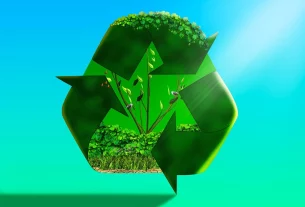Authors Judy Kingsbury and Marian Farrior share proven practices developed from existing community-based restoration programmes to foster similar programmes around the world.
Our article, co-authored with Bradley Herrick, was inspired by the UN Decade on Ecosystem Restoration and the call to halt and reverse the degradation of Earth’s ecosystems. We share the principles, practices and frameworks behind the Arboretum’s ‘Restoration Team Leader Program’, for volunteers, and the ‘Restoration Managers Who Work with Volunteers’ group.
We had two motivations in writing this Perspective piece: the belief that these two programmes could be useful models for other restoration practitioners, and a desire to improve community-engaged restoration projects to foster environmental and social well-being. We hope that the challenges and successes we experienced can help to inform other organizations and practitioners.

Community Engagement Emerging from Controversy
The Restoration Team Leader Programme grew out of early oak savanna restoration efforts in a highly visible and heavily visited area of the Arboretum adjacent to a densely populated neighbourhood in Madison, Wisconsin. Neighbourhood reactions to tree felling were strong and negative, prompting community meetings to foster understanding about the long-term ecological and research goals of the savanna restoration. These meetings led to restoration work parties with volunteer participants, co-sponsored by the Arboretum and the neighbourhood association, and later became the programme as we know today.
Community members objecting to ecological restoration activities is not unique to the Arboretum and is indeed encountered worldwide. This experience demonstrated the need for community outreach to facilitate their understanding of ecological restoration practices, and this comes from engaging the community in hands-on restoration activities, and in the associated dialogue, to foster their understanding and support.
Growing the Conceptual Framework of the Programme
Over the three decades of the Restoration Team Leader (RTL) Programme, we have learned that volunteers bring a range of experiences, motivations, values, and knowledge about the environment, nature, and ecological restoration. Because of this, we have grown the conceptual framework of the RTL Programme over time from environmental education and volunteer administration to incorporating leadership and communication tools, logic models for planning and evaluation, and social change practices including integral ecology and TheoryU.
We have also shifted from thinking of ecological restoration as strictly putting species back in a specific place to incorporating relationship building among humans and the many other species being restored.

We have seen the programme mature and, based on formal and informal evaluation, are certain that it creates community, deepens learning about ecological and social complexity, provides a way for people to have a positive impact on nature, and fosters public participation in ecological restoration.
Our restoration work takes place in a particular context – Madison, Wisconsin, a mid-sized city in the Upper Midwest of the United States. While specific restoration practices may not translate to other locations, we are confident that the underlying principles and concepts for engaging volunteers and creating collaborations will be of value to other practitioners.
Fostering Collaboration and Sharing in our County
There are many other organisations in Dane County (which includes Madison) that conduct ecological restoration and engage community members in the process. We wanted to collaborate and share resources, so we invited fellow restoration managers who work with volunteers to an initial meeting in August 2018.
Marian Farrior, Judy Kingsbury, and Bryn Scriver are the lead organisers for the group, which carries the descriptive but not-poetic name of “Restoration Managers Who Work with Volunteers (RMV).”
From the beginning, we have wanted the group to be highly participatory and operate as a Community of Practice. We have also wanted it to help improve restoration work and volunteer engagement in our county. Therefore, we’ve used techniques such as World Café and Liberating Structures to facilitate the gatherings, generate dialogue and foster the self-organizing capacity of participants.
The RMV group has been rewarding; new partnerships among organisations have emerged that foster positive and productive dialogue about the challenges and rewards of volunteer engagement in ecological restoration.

Different member organisations have hosted field trips to their restoration sites, and the Dane County Parks Natural Areas Programme added a “Partner Opportunities” to their interactive map that identifies all of our volunteer restoration sites. This is a very helpful resource for community members and fellow restoration managers to see what restoration projects are available in their area and how they can participate.
We hope readers will learn of new tools they can use to improve volunteer engagement in their restoration projects. We hope they will be motivated to form networks in their regions that foster collaboration, sharing of resources and information, and field trip exchanges for restoration practitioners.
Finally, we also hope readers will communicate with us about how volunteers engage in ecosystem restoration in their region so we can learn from restoration managers across the globe who work with volunteers.
Read the full Perspective: “Ecological restoration at the University of Wisconsin–Madison Arboretum and beyond: Building and sharing collective knowledge through a participatory leadership framework” in Ecological Solutions and Evidence and discover more articles from our ‘UN Decade on Ecosystem Restoration’ Special Feature.
